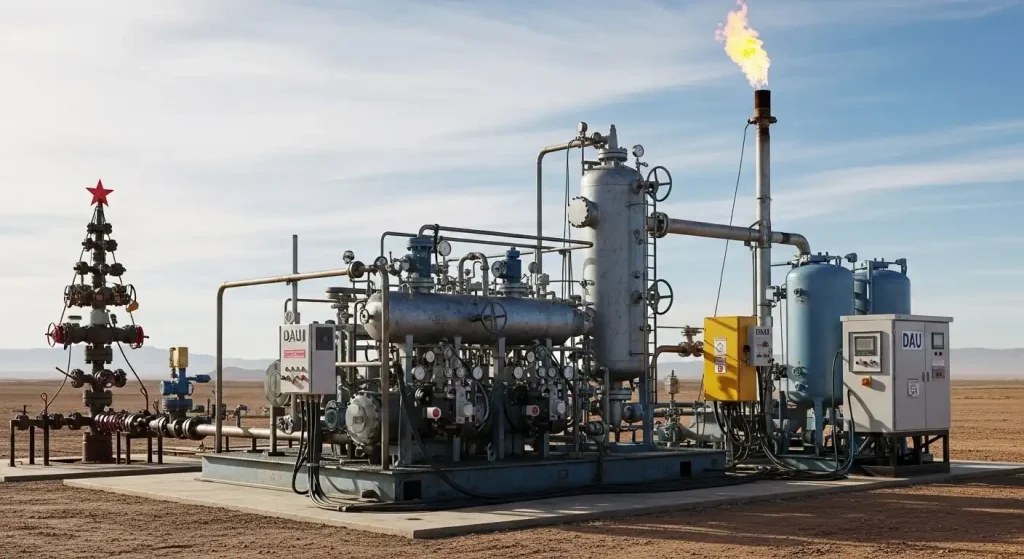
## Fabrication of Indirect Fired Heaters: A Detailed Look
Indirect fired heaters are crucial components in various industries, providing clean and safe heating solutions for processes where direct contact with combustion products is undesirable. From preheating air for combustion to drying materials and providing comfort heating, these heaters offer a versatile and efficient means of heat transfer. This article delves into the intricate process of fabricating indirect fired heaters, highlighting the key considerations and steps involved.
**Understanding the Core Principles**
Before diving into the fabrication process, it’s essential to understand the fundamental principles behind indirect fired heaters. They operate by transferring heat from a combustion source (burner) to a heat transfer fluid (typically air, water, or thermal oil) without direct contact. This fluid then circulates through a heat exchanger, delivering heat to the target application. The key components include:
* **Combustion Chamber:** Where fuel is burned to generate heat.
* **Burner:** Supplies fuel and air to the combustion chamber in a controlled manner.
* **Heat Exchanger:** The core of the system, responsible for transferring heat from the combustion gases to the heat transfer fluid.
* **Casing:** Provides structural support and insulation to minimize heat loss.
* **Stack/Flue:** Venting system for combustion gases.
* **Control System:** Monitors and regulates the heater’s operation, ensuring safe and efficient performance.
**The Fabrication Process: A Step-by-Step Guide**
The fabrication of an indirect fired heater is a complex process requiring skilled engineers, welders, and fabricators. Here’s a detailed breakdown of the key steps:
**1. Design and Engineering:**
* **Requirements Analysis:** The process begins with a thorough understanding of the client’s heating requirements, including the required heating capacity, desired temperature, flow rate of the heat transfer fluid, and application-specific constraints.
* **Conceptual Design:** Based on the requirements, engineers develop a conceptual design, selecting the appropriate type of heat exchanger (e.g., shell and tube, finned tube), burner, and control system.
* **Detailed Engineering:** This phase involves detailed calculations for heat transfer, pressure drop, and structural integrity. CAD software is used to create detailed drawings and specifications for each component.
* **Material Selection:** Choosing the right materials is critical. Common materials include carbon steel, stainless steel, and alloy steels, selected based on temperature, pressure, and corrosion resistance.
**2. Component Fabrication:**
* **Heat Exchanger Fabrication:** This is often the most complex part.
* **Tube Cutting and Bending:** Tubes are precisely cut and bent to the required dimensions.
* **Tube Sheet Drilling:** Tube sheets are drilled with precise hole patterns to accommodate the tubes.
* **Tube Insertion and Welding:** Tubes are inserted into the tube sheets and welded using specialized techniques to ensure leak-proof seals.
* **Shell Fabrication:** The shell is fabricated from steel plates, often using rolling and welding processes.
* **Combustion Chamber Fabrication:** The combustion chamber is typically fabricated from high-temperature resistant steel. This involves cutting, welding, and forming the steel plates to create a robust and insulated enclosure.
* **Burner Assembly:** The burner is often purchased as a pre-fabricated unit, but adjustments and modifications may be required to integrate it seamlessly with the heater.
* **Casing Fabrication:** The casing is fabricated from steel sheets and insulated with materials like mineral wool or ceramic fiber to minimize heat loss.
**3. Assembly and Welding:**
* **Component Assembly:** All fabricated components are carefully assembled according to the engineering drawings.
* **Welding:** Welding is a critical aspect of the fabrication process, ensuring the structural integrity and leak-proof seals of the heater. Certified welders use various welding techniques, such as SMAW, GMAW, and GTAW, depending on the materials and application.
* **Non-Destructive Testing (NDT):** Welds are inspected using NDT methods, such as radiography, ultrasonic testing, and liquid penetrant testing, to detect any defects.
**4. Testing and Quality Control:**
* **Hydrostatic Testing:** The heat exchanger and other pressure-containing components are subjected to hydrostatic testing to verify their leak-tightness and structural integrity.
* **Performance Testing:** The assembled heater is tested under simulated operating conditions to verify its heating capacity, efficiency, and control system functionality.
* **Quality Control:** Throughout the fabrication process, rigorous quality control measures are implemented to ensure that all components and welds meet the required specifications and standards.
**5. Painting and Finishing:**
* **Surface Preparation:** The heater’s exterior surfaces are prepared for painting by cleaning and removing any rust or scale.
* **Painting:** The heater is painted with a protective coating to prevent corrosion and enhance its appearance.
**6. Installation and Commissioning:**
* **Installation:** The fabricated heater is carefully installed at the client’s facility, following the manufacturer’s instructions and relevant safety regulations.
* **Commissioning:** The heater is commissioned by qualified technicians who ensure that it is operating correctly and efficiently.
**Key Considerations for Successful Fabrication:**
* **Material Selection:** Choosing the right materials is crucial for long-term performance and reliability.
* **Welding Quality:** High-quality welding is essential to ensure the structural integrity and leak-proof seals of the heater.
* **Heat Transfer Design:** Optimizing the heat transfer design is critical for achieving maximum efficiency.
* **Control System Integration:** A well-designed control system is essential for safe and efficient operation.
* **Compliance with Standards:** The fabrication process must comply with relevant industry standards and regulations.
**Conclusion:**
The fabrication of indirect fired heaters is a complex and demanding process that requires a combination of engineering expertise, skilled craftsmanship, and rigorous quality control. By following a well-defined process and paying close attention to detail, manufacturers can produce high-quality heaters that provide reliable and efficient heating solutions for a wide range of applications. As industries continue to prioritize energy efficiency and environmental responsibility, the demand for well-engineered and fabricated indirect fired heaters will only continue to grow.